Getting Inspired by Removing the Obvious
This week, I have finished the first painting of the new series, enabled by the grant that I got from Arts Promotion Centre Finland. This is the second blog post of this project, see the first one here!
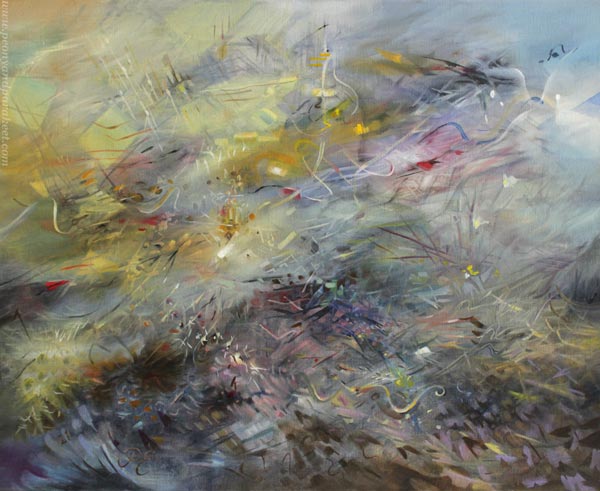
I wanted to combine two different styles for the painting.
Struggling with Differences
First, I wanted to honor Sandro Botticelli, a masterful painter from the Italian Renaissance, and include some of his colors and ornaments. I especially like the pastel colors in his paintings. Yellow ochre and ultramarine blue look beautiful in the mixtures. Botticelli’s painting The Madonna of the Pomegranate was my main inspiration for the color scheme. I also listened to Renaissance choir music and imagined how he felt when he painted and analyzed his work.
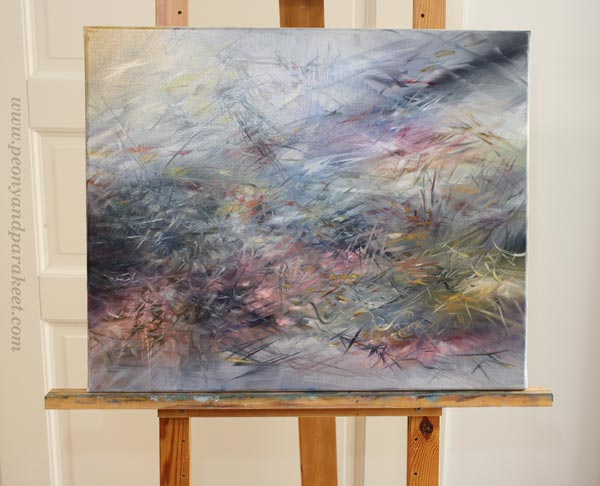
I also had another tutor, Wassili Kandinsky, from the 20th century. I reread his books On the Spiritual in Art and Point and Line to Plane and imagined him talking about releasing the inner sound of a shape.
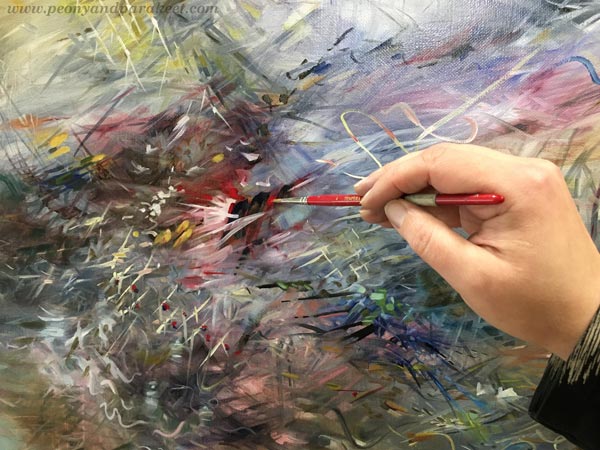
But knowledge and advice and all the left brain stuff can only help to a certain point. When focusing on facts and words, I lost not only Botticelli’s and Kandinsky’s voices but my own too. I ended up making too bold moves and the spirit of the painting was lost.
Indoors – Outdoors
Fortunately, I had to take many sittings because dogs require pauses. It feels that I am constantly moving from indoors to outdoors nowadays!

Then it hit me, that painting, life, and spirituality are not about defining two states like outdoors and indoors. I can bring indoor elements like lamps with outdoor elements like trees. Botticelli broke the division by painting decorative flowers that continued from the grass to clothes.
Removing the Obvious Limitations
And if indoors and outdoors can be one, why not break other obvious limitations too – for example, combine science and beliefs in the same painting.
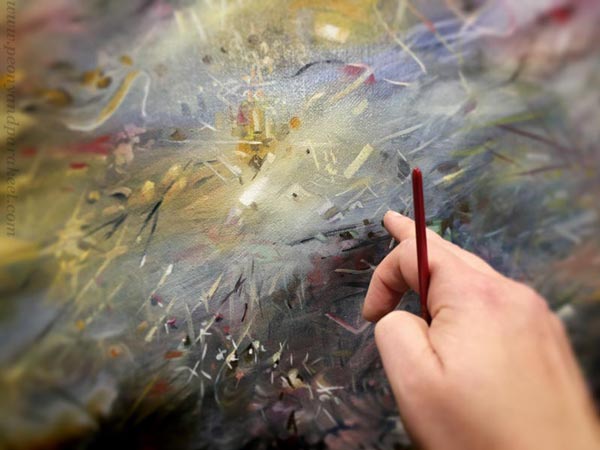
So I painted a chandelier, Botticelli’s divine rays, a light bulb to honor Thomas Edison, a tiny cross to represent spiritual beliefs. I allowed one association to freely lead to another. My mind was exploding when I thought about light and its all interpretations.
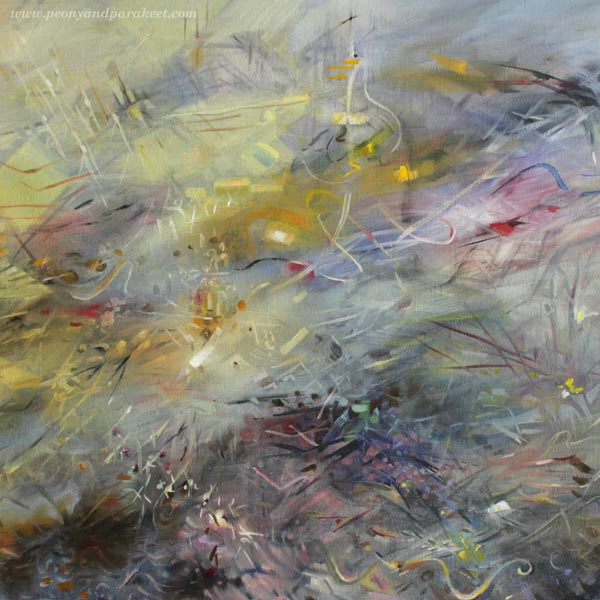
Some people collect chandeliers, others search for a proper lightbulb in a supermarket. Sometimes we believe in science, other times we have different beliefs. Some see angels instead of flowers. Sometimes we need darkness to see light, and other times we may need more light to the lightness. Light can be glitter that saves the day or a more permanent feeling of hope. Art and spirituality don’t have to be separate from the rational and mundane, but they can be the glue between the inner and outer world. We can remove the obvious, and express the diverse experience instead of a single thing.
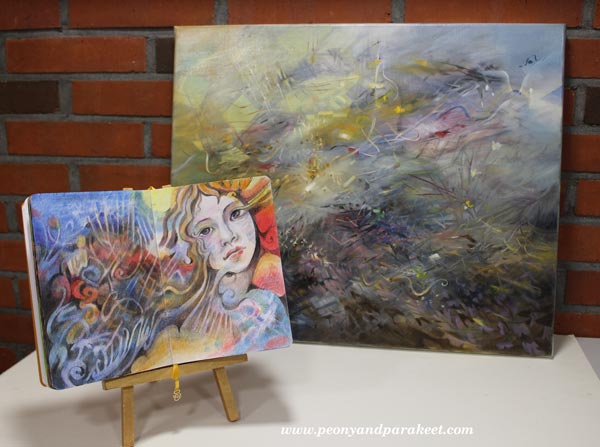
Releasing the Inner Sound
In the light of removing the obvious, Kandinsky’s idea of releasing the inner sound can simply mean this:
Make subtle changes to an element
so that the obvious interpretation becomes vaguer
and a variety of new ideas are raised.
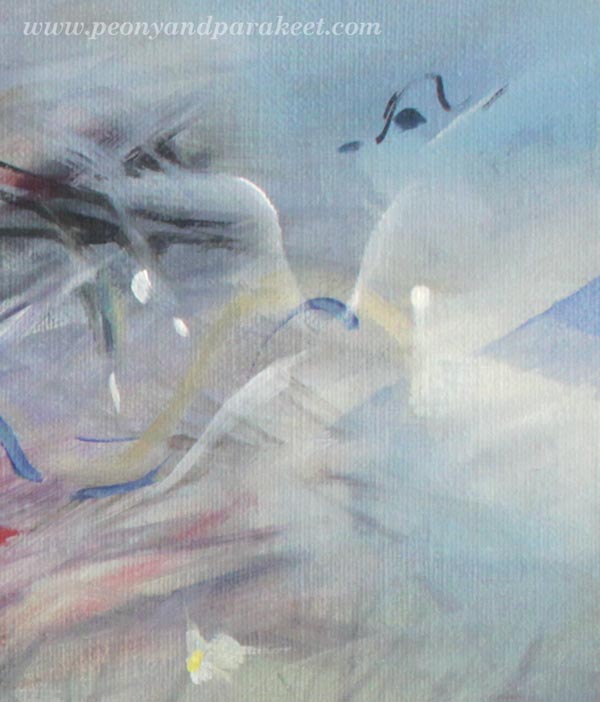
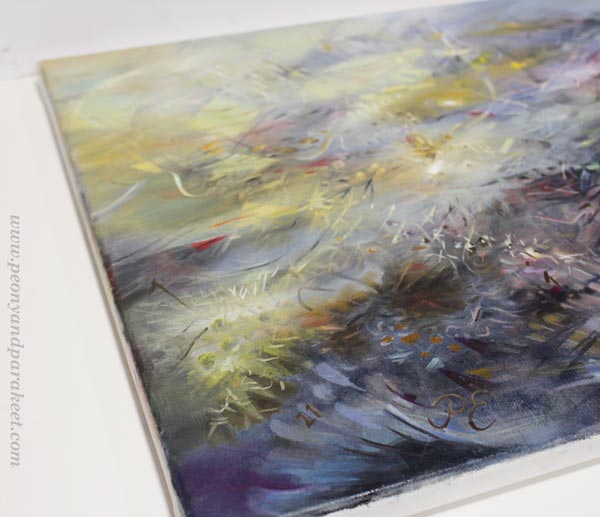
What could “removing the obvious” mean to you? Tell me what you think!
10 thoughts on “Getting Inspired by Removing the Obvious”
Comments are closed.
Interesting painting, interesting ideas. Makes us think.
Thank you, Lin!
So many lovely elements to investigate in your work! The spirituality comes through well. How many layers must you create to achieve this sense of mystery and wonder? You believe in your process and it has rewarded you with wonder !! Bravo !!
Thanks, Celeste! I usually work in 3 to 6 sittings, but work with more layers in the central parts. And yes, I love my process, it’s taken some time to make it work, but I think that developing classes has helped with that! I get to watch and explain what I do in the class videos and also question what I do and when.
Beautiful painting, I love the colors and your thoughts. I’m so glad you got that grant.
Thank you, Cheryl!!
A lovely painting and your narrative provides much wonderful food for thought; you are so deserving of the grant. Thank you for sharing your gift and insights.
Thanks so much, Sally!
Such interesting thoughts–I always like the way your mind and imagination integrate!
After all, we live on the Earthly plane and must contend with what we see. I don’t think it is such a stretch to accommodate the material world when we want to move toward the spiritual because, to my way of thinking, they are intimately connected. I believe I’ve written about my deep interest in mysticism on your blog previously. Here are the words of the great medieval mystic Meister Eckhart: “The visible things are out of the oneness of the divine light”, and their existence in the empirical world is due the “actualization of their ‘virtual being’”. Again physical things are, according to the great immaterial philosopher George Berekely, really ‘ideas’–we couldn’t ‘know’ them if we didn’t have an idea of them first. Berekely’s most famous theses in the history of philosophy is: “Esse is percipi”–“To be is to be perceived.” He considered this to be the first principle of human knowledge. Later, Georg Wilhelm Friedrich Hegel taught that “Absolute Spirit” is the primary structure of the universe: our thinking is the thinking of the Cosmic Spirit, who is thinking in us. So when the artist shows us his/her perception, these ideas on paper or canvas are a function of his/her mind which has its source in the living active mind of God. Perhaps if we can suspend our empirical thinking for a moment, we can admit that there is an invisible background to ‘reality’, something Quantum physics is very aware of now. We might perceive the visible world being something like the consciousness of the universe, while the hidden part is its unconscious–a very Jungian notion! It seems to me that these concepts are undeniable, even though so many in our postmodern world won’t acknowledge or accept them.
Päivi, I hope you will always continue to ‘see’ what is hidden within yourself and bring it out with joy in your work!
Thanks so much for your interesting comment, Louisa! It’s fascinating how we can look at the world!